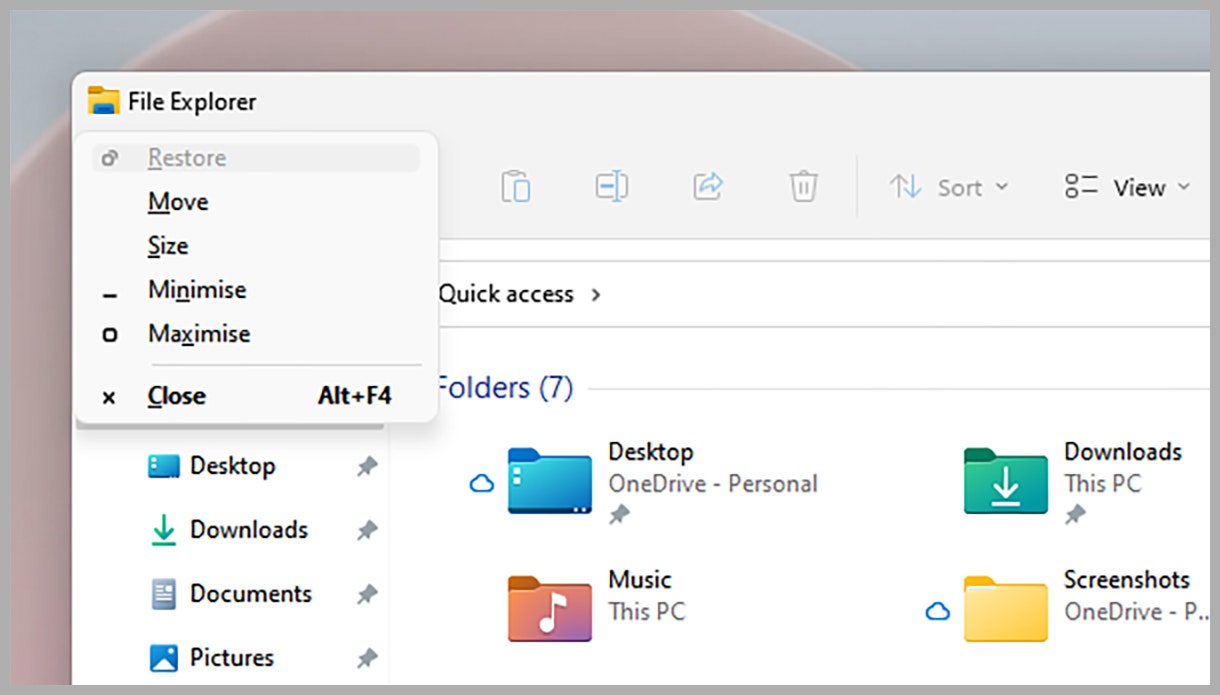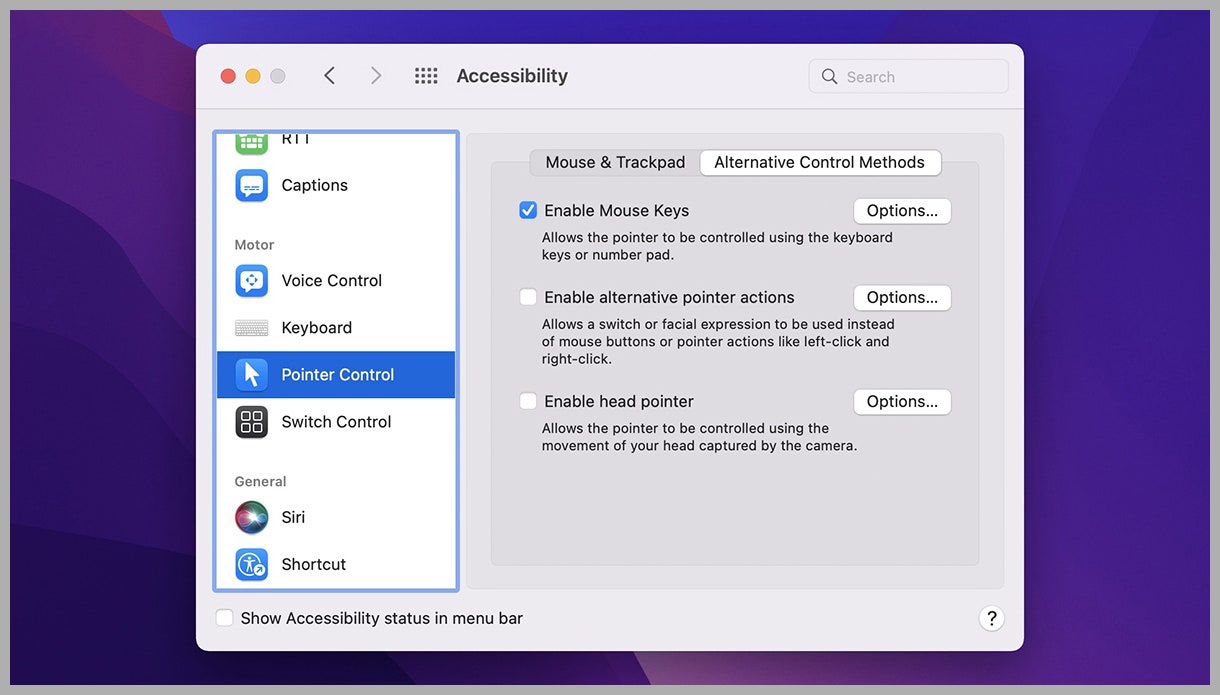Keyboard Shortcuts You Need (If You Know them, you don’t need a mouse)

THE MOUSE AND the trackpad are pretty fundamental to how we use our computers, but what if you’re unable to use a mouse or a trackpad in the usual way? Or if your mouse or trackpad malfunctions?
You can actually do just about everything you use a mouse and trackpad for using your keyboard, if you know the right shortcuts.
In Windows, the keyboard shortcuts you can use instead of a mouse or trackpad start off simple and can get quite advanced—to begin with, of course, there’s the Win button to open the Start menu, the Alt+Tab shortcut to switch between your open applications, and Alt+F4 to close down programs.
If you’re inside a menu, program, or website, you can use Tab to jump between sections or fields, and the arrow keys to go Up, Down, Left, or Right. You can search your computer with Win+S, or open the File Explorer interface with Win+E. Use Enter to confirm choices and make selections and Esc to exit out of menus and dialogs.
To control the behavior and position of open application windows, Win+Up maximizes them and Win+Down minimizes them. You can also tap Win+Left or Win+Right to snap the current window to the left or the right of the screen. Alt+Space gives you more options, including the ability to move windows (using the arrow keys).
A couple of other keyboard shortcuts that you might not have come across: If you’re not actually typing anything, you can use Space to scroll down long web pages or open documents. Also, if you need to access a right-click context menu without a mouse or a trackpad, Shift+F10 is the keyboard combination you’re looking for.
As you move through menus and dialogs, you’ll often see certain characters underlined, tipping you off to the fact that the key can be used to select the item directly—this can save you a lot of time tapping around with the arrow keys. If you’re selecting text, meanwhile, use Shift and an arrow key; to move one word at a time, use Shift+Ctrl and an arrow key.
In addition, some keyboard shortcuts work in a similar way across all Windows programs: Think Ctrl+C to copy, Ctrl+V to paste, Ctrl+S to save, or Ctrl+A to select everything in a section or on screen, for example. The Ctrl+W combination usually closes down whatever it is you currently have open, be it a browser tab or a document. Dig deeper into your individual programs, and you’ll find they all have bespoke keyboard shortcuts—and for even more shortcuts, check out Microsoft’s list.
One final tip: If your keyboard has a numeric keypad at the side, go to Settings and choose Accessibility and Mouse, and then enable Mouse Keys. This lets you control the on-screen cursor using the keypad on your keyboard (so 8 moves the cursor up, 2 moves the cursor down, and so on).
A lot of keyboard shortcuts work the same across Windows and macOS, so some from the previous section apply to a Mac as well. Shortcuts that work the same include Cmd+C to copy, Cmd+V to paste, Cmd+S to save, and Cmd+A to select everything in the current field or document. You can also use Cmd+W to close down the current browser tab, document, or Finder window.
As for switching between open apps, that changes to Cmd+Tab if you’re on Apple’s operating system, and you can also press Cmd+Space to search your Mac. Ctrl+F2 will switch the focus to the menu bar, and Ctrl+F3 brings up the dock (if you’re using a keyboard with the Touch Bar, you need Ctrl+Fn+F2 and Ctrl+Fn+F3). Once the focus has been moved, you can make use of the arrow keys, Esc, and Enter as needed. You can also use Cmd+ to open the preferences pane for the current app.
The text selection shortcuts are similar to those on Windows because you can hold down Shift and then use the arrow keys to select text. If you want to select one word at a time, use Shift+Option and the arrow keys. When it comes to managing open program windows, meanwhile, Cmd+M will minimize the currently selected window, but there’s no built-in keyboard shortcut for maximizing windows.
Some menu items inside programs will have their own keyboard shortcuts, which will be displayed on the menus themselves where they’re available—it pays to remember what these are, as it can really speed up your day-to-day computing in the applications you use the most. For a host of other useful shortcuts, you can consult Apple’s list.
There are also some accessibility tweaks in macOS that make it easier to use your keyboard as a replacement for a mouse or a trackpad. Open System Preferences, then choose Keyboard and Shortcuts. Check the box marked Use keyboard navigation to move focus between controls to make Tab more universal as a way of moving focus (and Shift+Tab for going in the opposite direction).
You can also take full control over the pointer with the keyboard. From System Preferences, choose Accessibility, Pointer Control, and Alternative Control Methods, then check the Enable Mouse Keys box. If you have a numeric keypad on your keyboard, you can then use it to move the pointer (4 to go left, 6 to go right, and so on.)
View List Below:
Shortcut Keys and their Functions: Some commonly used computer short cut keys are documented below.
Short-cut Keys and their Descriptions
Alt + F: File menu options in current program.
Alt + E: Edit options in current program
F1: Universal Help in almost every Windows program.
Ctrl + A: Select all text.
Ctrl + X: Cut
Shift + Del: Cut selected item.
Ctrl + C: Copy selected item.
Ctrl + Ins: Copy selected item.
Ctrl + V: Paste selected item.
Shift + Ins: Paste.
Home: Goes to beginning of current line.
Ctrl + Home: Goes to beginning of document.
End: Goes to end of current line.
Ctrl + End: Goes to end of document.
Shift + Home: Highlights from current position to beginning of line.
Shift + End: Highlights from current position to end of line.
Ctrl + Left arrow: Moves one word to the left at a time.
Ctrl + Right arrow: Moves one word to the right at a time.
Shortcut Keys and their Functions: Below is a listing of all the major shortcut keys in Microsoft Word.
Shortcut Keys and their Descriptions
Ctrl + A: Select all contents of the page.
Ctrl + B: Bold highlighted selection.
Ctrl + C: Copy selected text.
Ctrl + X: Cut selected text.
Ctrl + P: Open the print window.
Ctrl + F: Open find box.
Ctrl + I: Italic highlighted selection.
Ctrl + K: Insert link (Shortcut Keys and their Functions).
Ctrl + U: Underline highlighted selection.
Ctrl + V: Paste.
Ctrl + Y: Redo the last action performed.
Ctrl + Z: Undo last action.
Ctrl + L: Aligns the line or selected text to the left of the screen.
Ctrl + E: Aligns the line or selected text to the center of the screen.
Ctrl + R: Aligns the line or selected text to the right of the screen.
Ctrl + M: Indent the paragraph.
Ctrl + Shift + F: Change the font.
Ctrl + Shift + >: Increase selected font +1pts up to 12pt and then increases font +2pts.
Ctrl + ]: Increase selected font +1pts.
Ctrl + Shift + <: Decrease selected font -1pts if 12pt or lower, if above 12 decreases font by +2pt.
Ctrl + [: Decrease selected font -1pts.
Ctrl + Shift + *: View or hide non printing characters.
Ctrl + L: Moves one word to the left.
Ctrl + R: Moves one word to the right.
Ctrl + : Moves to the beginning of the line or paragraph.
Ctrl + : Moves to the end of the paragraph.
Ctrl + Del: Deletes word to right of cursor.
Ctrl + Backspace: Deletes word to left of cursor.
Ctrl + End: Moves the cursor to the end of the
document.
Ctrl + Home: Moves the cursor to the beginning of the document.
Ctrl + Spacebar: Reset highlighted text to the default font.
Ctrl + 1: Single-space lines.
Ctrl + 2: Double-space lines.
Ctrl + 5: 1.5-line spacing.
Ctrl + Alt + 1: Changes text to heading 1.
Ctrl + Alt + 2: Changes text to heading 2.
Ctrl + Alt + 3: Changes text to heading 3.
Alt + Shift + D: Insert the current date.
Alt + Shift + T: Insert the current time.
In addition to the above shortcut keys users can also use their mouse as a method of quickly do something commonly performed.
Below some are examples of mouse shortcuts.
Mouse shortcuts and their Descriptions
Click, hold, and drag: Selects text from where you click and hold to the point you drag and let go.
Double-click: If double-click a word, selects the complete word.
Double-click: Double-clicking on the left, center, or right of a blank line will make the alignment of the text left, center, or right aligned.
Double-click: Double-clicking anywhere after text on a line will set a tab stop.
Triple-click: Selects the line or paragraph of the text the mouse triple-clicked.
Ctrl + Mouse wheel: Zooms in and out of document (Shortcut Keys and their functions.
100 Keyboard Shortcuts in Windows 10
A list of 100+ keyboard short-cuts for Windows 10, including shortcuts for copy, paste, and more.
Here’s the full list of keyboard short-cuts for Windows 10 – all the Windows 10 keyboard shortcuts you need to know
Keyboard shortcut → Action
Windows key → Open or close Start Menu.
Windows key + A → Open Action center.
Windows key + C → Open Cortana in listening mode.
Windows key + D → Display or hide the desktop.
Windows key + E → Open File Explorer.
Windows key + G → Open Game bar when a game is open.
Windows key + H → Open the Share charm.
Windows key + I → Open Settings.
Windows key + K → Open the Connect quick action.
Windows key + L → Lock your PC or switch accounts.
Windows key + M → Minimize all windows.
Windows key + R → Open Run dialog box.
Windows key + S → Open Search.
Windows key + U → Open Ease of Access Center.
Windows key + X → Open Quick Link menu.
Windows key + Number → Open the app pinned to the taskbar in the position indicated by the number.
Windows key + Left arrow key → Snap app windows left.
Windows key + Right arrow key → Snap app windows right.
Windows key + Up arrow key → Maximize app windows.
Windows key + Down arrow key → Minimize app windows.
Windows key + Comma → Temporarily peek at the desktop.
Windows key + Ctrl + D → Add a virtual desktop.
Windows key + Ctrl + Left or Right arrow → Switch between virtual desktops.
Windows key + Ctrl + F4 → Close current virtual desktop.
Windows key + Enter → Open Narrator.
Windows key + Home → Minimize all but the active desktop window (restores all windows on second stroke).
Windows key + PrtScn → Capture a screenshot and save in Screenshots folder.
Windows key + Shift + Up arrow → Stretch the desktop window to the top and bottom of the screen.
Windows key + Tab → Open Task view.
Windows key + “+” key → Zoom in using the magnifier.
Windows key + “-” key → Zoom out using the magnifier.
Ctrl + Shift + Esc → Open Task Manager.
Alt + Tab → Switch between open apps.
Alt + Left arrow key → Go back.
Alt + Right arrow key → Go forward.
Alt + Page Up → Move up one screen.
Alt + Page down → Move down one screen.
Ctrl + Alt +Tab → View open apps
Ctrl + C → Copy selected items to clipboard.
Ctrl + X → Cut selected items.
Ctrl + V → Paste content from clipboard.
Ctrl + A → Select all content.
Ctrl + Z → Undo an action.
Ctrl + Y → Redo an action.
Ctrl + D → Delete the selected item and move it to the Recycle Bin.
Ctrl + Esc → Open the Start Menu.
Ctrl + Shift → Switch the keyboard layout.
Ctrl + Shift + Esc → Open Task Manager.
Ctrl + F4 → Close the active window.
20 Microsoft Word Shortcut Keys
- Ctrl+W → Close the active window / document.
- Ctrl+Z → Undo an action.
- Ctrl+Y → Redo the last action or repeat an action.
- Ctrl+S → Save a document.
- Ctrl+P → Print a document.
- Ctrl+K → Insert a hyperlink.
- Alt+Left → Arrow Go back one page.
- Alt+Right → Arrow Go forward one page.
- Ctrl+C → Copy selected text or graphics to the Office Clipboard.
- Ctrl+V → Paste the most recent addition to the Office Clipboard.
- Ctrl+Shift+A → Format all letters as capitals.
- Ctrl+B → Applies or removes bold formatting.
- Ctrl+I → Applies or removes italic formatting.
- Ctrl+= → Apply subscript formatting (automatic spacing).
- Alt, F, A → Save As.
- Alt, S, T, I → Insert Table of Contents.
- Alt, S, T, R → Remove Table of Contents.
- Alt, W, F → Full Screen Reading – View > Document Views > Full Screen Reading.
- Alt, W, R → Ruler. View > Show/Hide > Ruler.
- Alt, F, X → Exit Word.
















